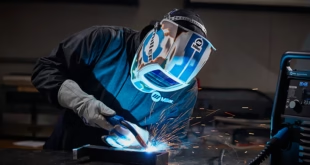Old vs. New Welding Techniques: Bridging Tradition and Innovation
Introduction
Welding, a process that unites materials through heat and skill, stands as a cornerstone of industrial development. The evolution of welding techniques, from the age-old traditions to the cutting-edge innovations of today, paints a fascinating portrait of progress in the industrial realm. Comparing old and new welding techniques offers insights into the craftsmanship, technology, and efficiency that shape our world. This article delves into this captivating comparison, exploring the differences, advantages, and drawbacks that each era of welding brings to the table.
Old Welding Techniques
In the past, welding relied on methods like oxy-fuel and stick welding. Oxy-fuel welding involved combining oxygen and fuel gases to create a high-temperature flame that melted base metals. Stick welding, or SMAW, employed a flux-coated electrode and an electric current to create an arc that formed the weld. While versatile, these techniques were slower, lacked precision, and raised safety concerns due to open flames and intense heat. Nonetheless, they found their niche in industries like historic preservation and projects in remote locations with limited resources.
New Welding Techniques
Modern welding techniques include Gas Metal Arc Welding (GMAW/MIG), Gas Tungsten Arc Welding (GTAW/TIG), laser welding, and plasma welding. GMAW/MIG uses a continuous electrode wire and shielding gas, while GTAW/TIG relies on a non-consumable tungsten electrode and inert gas for shielding. Laser welding utilizes a focused laser beam, and plasma welding combines TIG principles with plasma cutting. These methods offer enhanced precision, higher efficiency, reduced heat-affected zones, and compatibility with diverse materials.
Comparison Between Old and New Techniques

The contrasts between old and new techniques are evident across several key factors:
- Speed and Efficiency: New techniques like laser and plasma welding surpass the slower deposition rates of old methods, leading to increased efficiency and shorter production times.
- Precision and Quality: The precision and control of modern techniques result in consistent, high-quality welds with reduced distortion, unlike the variations inherent in old methods.
- Safety Considerations: Modern techniques often involve closed systems and better fume extraction, enhancing operator safety and reducing exposure to hazardous conditions.
- Environmental Impact: New methods are more environmentally friendly due to reduced waste generation, lower emissions, and improved energy efficiency.
- Skill Requirements and Training: Old methods demand hands-on experience and craftsmanship, while new techniques require a different skill set, including the operation of advanced equipment and programming.
- Cost Factors: Though new techniques require higher initial investments, they offer potential long-term cost savings through increased efficiency and reduced labor time.
Challenges and Drawbacks of New Techniques
The adoption of modern techniques comes with challenges:
- The initial investment in specialized equipment can be a barrier for smaller businesses.
- The complexity of operating and maintaining advanced equipment demands technical expertise.
- A shortage of skilled labor capable of handling new technology can hinder industry progression.
- The risk of automation replacing manual labor raises concerns about job displacement.
FAQs
What are old welding techniques, and why were they used?
Old welding techniques include oxy-fuel and stick welding. These methods were used to join metals by melting them with heat generated from a flame or an electric arc. They were employed due to their versatility, even though they were slower, less precise, and presented safety concerns.
What are the advantages of modern welding techniques?
Modern welding techniques like GMAW/MIG, GTAW/TIG, laser welding, and plasma welding offer enhanced precision, faster production times, reduced heat-affected zones, and the ability to work with a wide range of materials. They are also often more environmentally friendly and produce higher-quality welds.
How do modern techniques compare in terms of speed and efficiency?
Modern techniques, such as laser and plasma welding, are significantly faster and more efficient than older methods like oxy-fuel and stick welding. The increased deposition rates and welding speeds contribute to shorter production times and improved productivity.
What considerations should be made for worker safety in welding?
Worker safety is crucial in welding. While old techniques like oxy-fuel and stick welding involve open flames and intense heat, modern methods often have better fume extraction systems and closed environments, reducing exposure to harmful fumes, UV radiation, and fire hazards.
Are there challenges associated with adopting new welding techniques?
Yes, there are challenges. Transitioning to modern techniques requires an initial investment in specialized equipment, which can be a financial hurdle. Additionally, operating and maintaining advanced equipment demands technical expertise, and industries may face a shortage of skilled operators trained in these new methods.
Is there a risk of automation replacing manual labor in welding?
Yes, the automation associated with modern welding techniques can raise concerns about job displacement. While automation can improve efficiency, it might lead to a reduced need for manual labor. This highlights the need for upskilling and adapting to new roles in the evolving welding landscape.
Conclusion
The comparison between old and new welding techniques exemplifies the harmonious coexistence of tradition and innovation. The transition from slower, manual methods to advanced, automated technologies embodies the drive for efficiency, quality, and safety. As industries navigate this evolution, a balanced understanding of both eras informs decision-making and ensures the preservation of craftsmanship even as technology propels us forward. By appreciating the strengths of each technique, we create a welding landscape that bridges the past with the future, enhancing our ability to connect and shape the world around us.
 Welding of Welders All about Welding and Welders
Welding of Welders All about Welding and Welders



